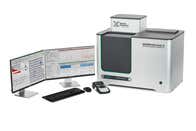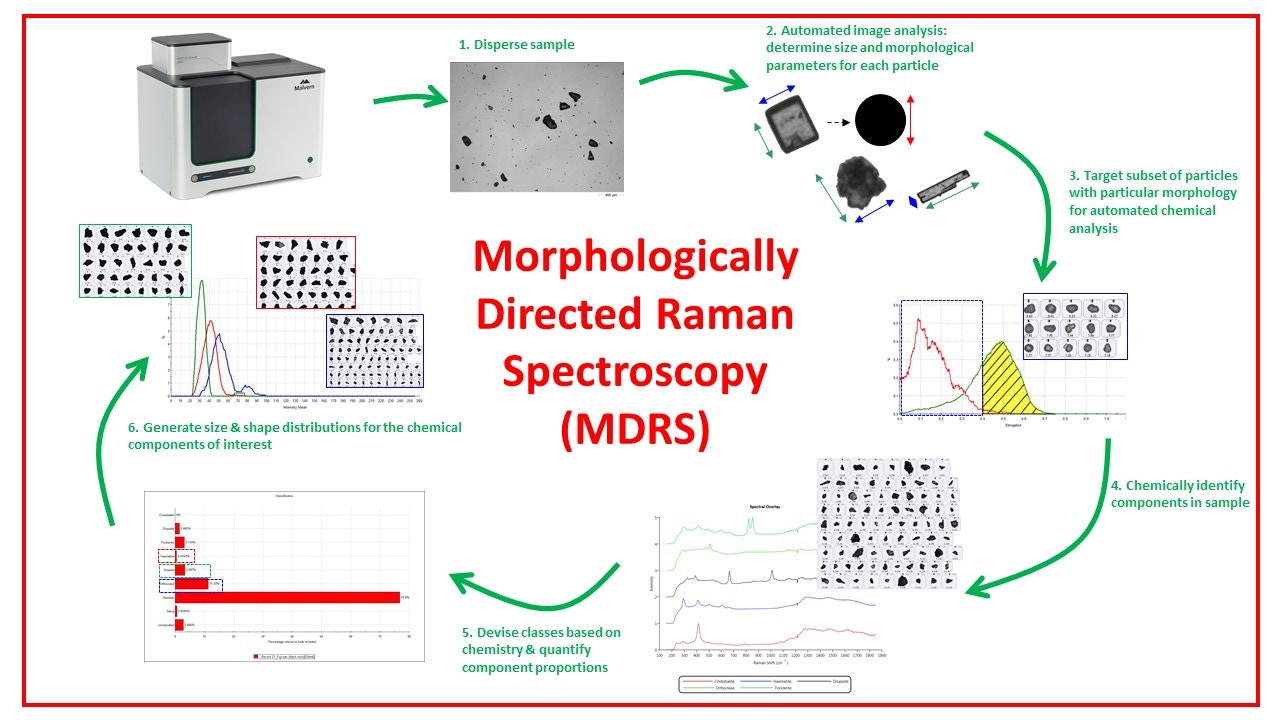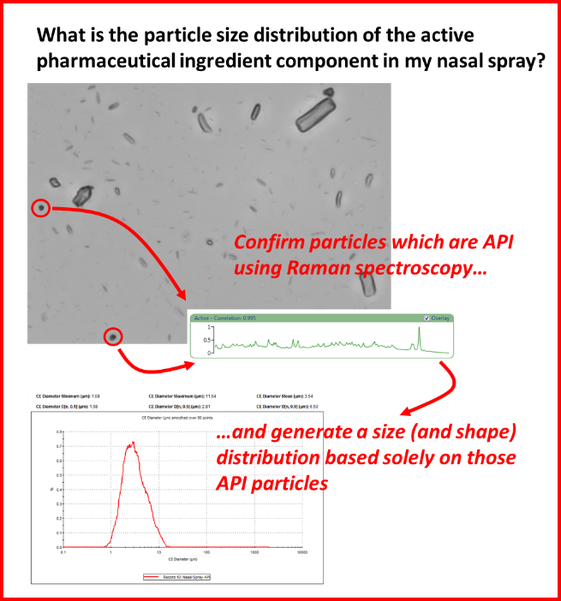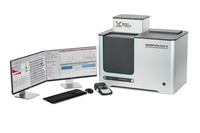
Morphologi 4-ID
Rapid, automated, component-specific particle characterization in a single,...
Component-specific chemical identification using MDRS

Morphologically Directed Raman Spectroscopy or MDRS®, combines the techniques of automated particle imaging and Raman microspectroscopy in one, integrated platform. This enables rapid, automated chemical and morphological characterization of the individual components in a multi-component sample.

Rapid, automated, component-specific particle characterization in a single,...
The first stage of an MDRS measurement is automated image analysis of the dispersed sample. This determines the size and an array of shape parameters for each individual particle, together with its precise position on the measurement slide. This information is then used to direct the Raman spectroscopic analysis, the second stage of the technique.
At its simplest, Raman analysis is performed on a randomly-selected subset of the particles, allowing the user to chemically identify a sample’s multiple components, create particle classes based on these assignments, and determine the relative proportions of each component. A morphological description of each chemically-identified component can then be generated in the form of size and shape distributions, using the data from the automated image analysis.
If particular components in the blend are of interest, the measurement can be refined by selectively targeting those particles with a distinct morphology for chemical analysis; for example, particles within a certain size range, or with shape parameters above a specific value. By focusing the Raman measurement only on the components of interest, more of these particles can be characterized in a given timeframe.



Morphologi 4-IDRapid, automated, component-specific particle characterization in a single, integrated platform with a trial subscription to Wiley’s KnowItAll® Raman Identification Pro package |
|
|---|---|
| Measurement type | |
| Chemical identification | |
| Particle size | |
| Particle shape | |
| Contaminant detection and analysis | |
| Particle size range | 0.5µm - 1300µm |
| Technology | |
| Image analysis | |
| Morphologically Directed Raman Spectroscopy (MDRS) |